The trend towards natural and safe ingredients has long since arrived in the food industry and is reflected in customers' need for natural food colourants. The Irish company Cybercolors specialised in the production of natural colours many years ago, maximising their visual appeal and developing an innovative colour technology for cheese and whey.
The psychology of food colouring
Food colourants are used to compensate for colour loss due to light, air, moisture and temperature fluctuations, to intensify naturally occurring colours and to colour colourless or differently coloured foods. In addition to the use of colour as a trademark for a specific product, colour also influences the perception and acceptance of food by the consumer.
1. The influence of colour on food perception
Consumers have clear, albeit mostly unconscious expectations of the visual appearance of food. The colour of a product is the first sensory perceptible feature, triggers likes or dislikes and provides initial information about product quality and characteristics.
Colour and taste perception are also closely linked. Different colours influence taste in different ways. Changing the hue or intensity/saturation of the colour of food and beverages can sometimes dramatically influence consumers' expectations and thus their subsequent experiences.
For example, in a
study with untrained testers, a pink coloured Chardonnay was rated as the fruitiest sample, but with the least body, maturity and complexity. If the wine was coloured red, it was rated with the most body, the highest maturity and the highest complexity.
Colour thus creates a psychological expectation for a particular taste that is often impossible to displace.
2. High acceptance of natural looking products
The colour of food is a major factor in its acceptability. People naturally tend towards foods with natural colours and associate them with high quality. A washed-out or artificial-looking colour makes food look less fresh and is likely to be rejected.
A natural-looking colour in a food or drink, on the other hand, signals high quality. It is therefore important to preserve the natural or distinctive colour of a food product while it is being manufactured or stored for future use.
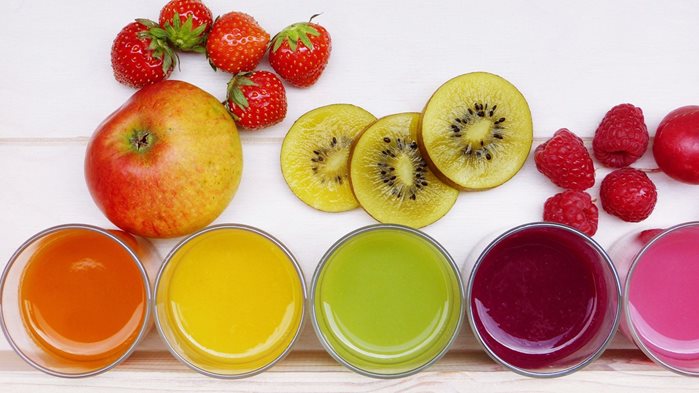
Clean labelling and natural food colours
The critical attitude of many consumers towards additives and the tightened labelling regulations have led to a strong demand for clean label products worldwide. Consumers associate clean labels primarily with "natural", "organic" or "free of additives/preservatives". Furthermore, consumers often imply that the product has been less processed and is therefore healthier.
Natural food colours meet this consumer expectation and will continue to gain importance in the food market, as will natural preservatives in the clean beauty sector. In addition to transparent information about the origin and processing of the raw materials used, compliance with ethical and environmentally sound standards will also be a key purchase criterion for consumers in the future.
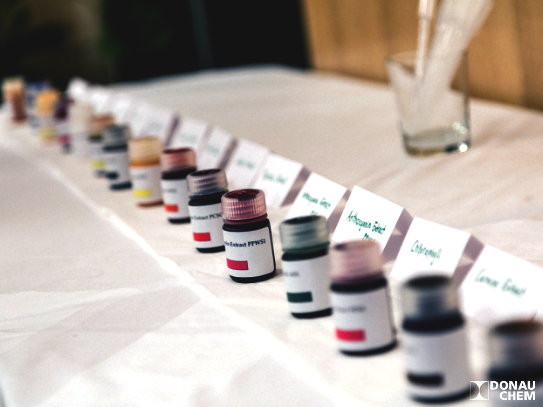
Donauchem Food Forum 2019: Tests on the use of natural colourants in food processing © Donauchem
Cybercolors: specialist for natural food colours
Cybercolors is an innovative food ingredients company based in Cork, Ireland, specialising in natural food colours for various industries such as food and beverage, dietary supplement, health and nutrition industries.
Founded in 2000, the company operates manufacturing facilities in Ireland and the USA and is accredited to ISO9001:2000 and ISO22000. Production is based on sustainable principles and is endorsed by Origin Green Ireland.
The company has also recently completed an internal project to replace raw materials derived from palm oil with more sustainable equivalents. Cybercolors also uses an innovative colour technology that produces coloured cheese without colouring the whey.
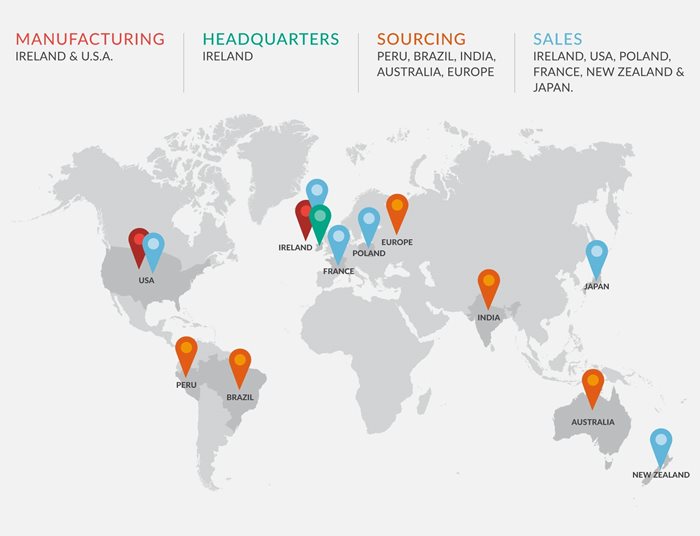
© Cybercolors. Locations worldwide.
Applications of natural food colours
The use of Cybercolors colourants ranges from dairy products to confectionery and bakery products to beverages and seasonings:
- Dairy products: Cheese (natural & processed), cheese powder, ice cream, dairy desserts and sports nutrition blends.
- Confectionery: Hard candies, sugar glazes and creams, coloured chocolate, filled luxury chocolate.
- Beverages: soft drinks, juices, some alcoholic beverage applications, milk-based beverages and powdered beverages.
- Spicy foods: Snack foods & snack seasonings and meat & meat seasonings.
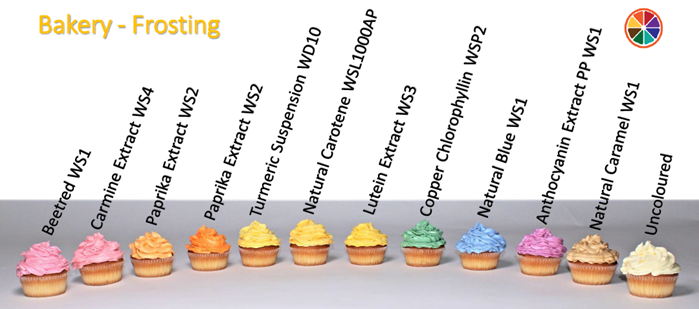
© Cybercolors
Innovative colour technology for cheese and whey
Clear Whey Natural Cheese Colour technology is a proprietary, patented technology that enables coloured cheese to be produced without colouring the whey stream. It is used in coloured Cheddar, Gouda and other premium cheeses and ensures optimal colour stability during cheese storage/maturing.
Clear Whey is a natural alternative to annatto for cheese and whey. Cheese makers also benefit from a colour-free whey stream when using Clear Whey.
Clear Whey benefits for cheese:
- Easy to handle and use.
- Easily dispersible in milk. Superior to Annatto.
- Perfect Annato colour matching.
- Flexibility to adjust cheese colour.
- More enrichment options available.
- Higher colour stability (not prone to fading or pinking).
- Stable, vibrant colour throughout shelf life.
- Eliminates loss of colour stability.
- Enables growth of the coloured cheese market.
Clear Whey benefits for whey:
- NO colour transfer.
- Natural solution - NO bleaching required.
- Better taste compared to bleached whey.
- Process efficiencies.
- Whey suitable for infant formula.
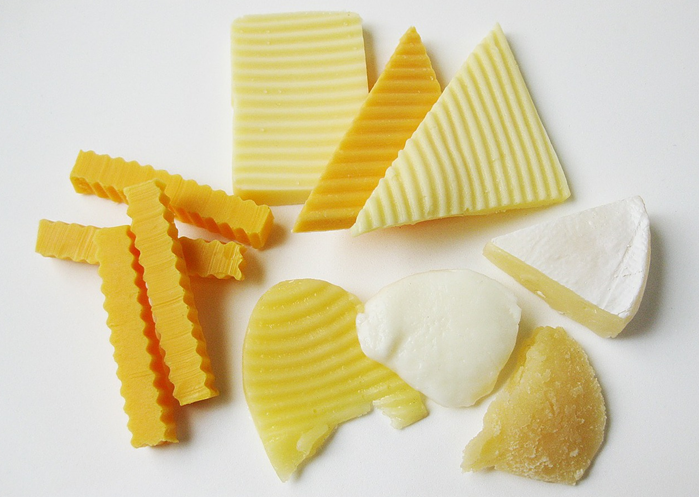
The Cybercolors product portfolio
Cybercolors offers colour innovations tailored to the needs of the industry. The broad product portfolio includes powder, oil-soluble and water-soluble natural food colours. Most raw materials are vegetarian, halal and kosher.
Annatto
The reddish-yellow seeds of the orlean bush are grown on a commercial plantation in the Brazilian state of Sao Paulo. They are processed to produce oil suspensions, oil-soluble and water-soluble annatto dyes. Main applications: Spices, margarine, cheese.
Anthocyanins
Grape skins are mainly sourced in France, Spain and Italy and used to produce liquid and powder with a grape/purple colour. Polyphenol powders are also produced. Main uses: Beverages, food supplements.
Beetroot
Beetroot sourced from sustainable plantations in the EU and used to produce water-soluble liquids and powders. Main applications: Dairy desserts, yoghurts, ice cream, condiments.
Carmine/Cochineal
The red dye Carmine Lake is sourced from commercial plantations in Peru and used to make water-soluble liquids and oil suspensions. Main applications: Yoghurt, fruit preparations, meat, beverages.
Carotene
Natural carotenoids are extracted from plant algae to produce a concentrated oil suspension. This is used to produce natural carotene suspensions, water-soluble liquids and powders. Main applications: Margarine, beverages, food supplements and ice cream.
Chlorophyll
Chlorophyll is extracted from alfalfa (clover) grown in the UK. It is used to make water-soluble liquids and powders. Main uses: Drinks, ice cream
Elderberry
Dark elderberries are obtained from sources in Europe and used to make water-soluble liquids and powders. Main uses: Fruit preparations, beverages.
Lutein
Marigolds are grown on commercial plantations in India. The red-orange coloured lutein is extracted to make oil suspensions and water-soluble liquids. Main uses: Beverages, food supplements.
Peppers
Peppers are grown in commercial plantations in India and extracted to produce oleoresin, a bright orange natural colour. This is used to make oil preparations and water-miscible liquids. Main uses: Spices, meat, poultry.
Turmeric
Turmeric rhizomes are grown in India and extracted to produce curcumin powder. This powder produces a bright yellow colour. It is used to make oil suspensions, water-soluble liquids and powders. Main applications: Desserts, margarines, spices.
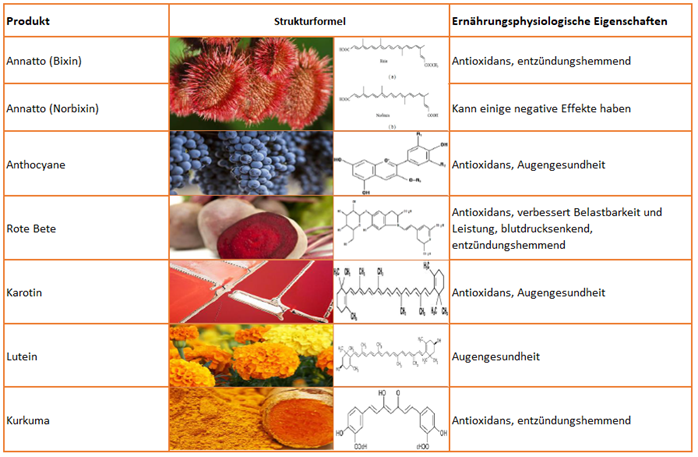
© Cybercolors
Conclusion: Natural food colours
Natural colours in food are gaining importance due to consumer trends. Unlike the widely used colourants made from petrochemical derivatives and other unsustainable sources, all Cybercolors colourants come from renewable, natural sources.
For questions about the Cybercolors portfolio and custom solutions for your application, please contact us.
 www.donauchem.at
Weiterführende Links:
Cybercolors Ireland
www.donauchem.at
Weiterführende Links:
Cybercolors Ireland